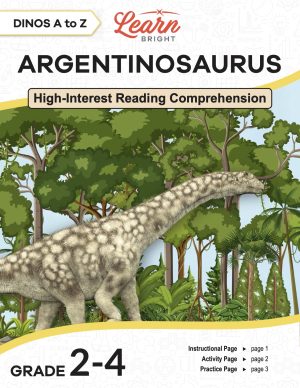Description
What our All about Canada lesson plan includes
Lesson Objectives and Overview: All about Canada lesson plan introduces students to this North American country. At the end of the lesson, students will know about the location, history, and culture of Canada. They will also know interesting facts about the country and about how it and the United States cooperate in economic and political activities that benefit both countries. This lesson is for students in 5th grade and 6th grade.
Classroom Procedure
Every lesson plan provides you with a classroom procedure page that outlines a step-by-step guide to follow. You do not have to follow the guide exactly. The guide helps you organize the lesson and details when to hand out worksheets. It also lists information in the orange box that you might find useful. You will find the lesson objectives, state standards, and number of class sessions the lesson should take to complete in this area. In addition, it describes the supplies you will need as well as what and how you need to prepare beforehand. The supplies you will need for this lesson are pencils, pens, highlighters, and the handouts.
Options for Lesson
The “Options for Lesson” section of the classroom procedure page lists a number of suggestions for ideas and activities you could incorporate into the lesson. The optional additions to this lesson are to visit the National Geographic website, the Learn Bright video site, and the websites for tour companies that operate in Canada to learn more about sites of interest for people visiting Canada.
Teacher Notes
The teacher notes page includes a paragraph with additional guidelines and things to think about as you begin to plan your lesson. This page also includes lines that you can use to add your own notes as you’re preparing for this lesson.
ALL ABOUT CANADA LESSON PLAN CONTENT PAGES
All about Canada
The All about Canada lesson plan includes four pages of content. The lesson begins by stating that the Canadian flag is important culturally and historically. The red and white stripes remind people of two of Canada’s natural resources, snow and maple leaves. They designated the maple tree as the national tree of Canada in 1996, but the country’s flag is even more significant and historical. The maple leaf has represented the country since the 1800s. It’s been on flags, coats of arms, and military uniforms. Both France and England, early explorers and colonizers of Canada, use red and white as their colors. The color red represents prosperity, while the color white represents peace and neutrality. The maple leaf also signifies the vast natural resources of Canada.
Geography
The height of Canada covers more than half of the entire Northern Hemisphere. East to west, Canada, which is 4,700 miles wide, has six different time zones. Even with all of this space, less than one half of one percent of the world’s population lives in Canada. The northern part of the country is in the Arctic and has ice and glaciers. There are more than 879,800 lakes in Canada, which is more than the rest of the world’s lakes combined. The Great Lakes have about 18% of the world’s fresh lake water. Canada also has mountains, hills, swaps, and dense forests. You can find some of oldest rocks in the world in area of Canada called the Canadian Shield.
Because it’s so big, the climate of Canada varies. On the west side of the country, the weather remains mild. The northern parts, however, have some of the coldest year-round temperatures in the world. The central region has cold winters and hot summers, and the forests have lots of wildlife, like bears, moose, and caribou. In general, Canadians care about protecting the environment. They have 41 national parks and three marine conservation areas. Canada has the longest coastline in the world and a whopping 90% of the country is uninhabited.
History
Canada’s history began 15,000 to 30,000 years ago, when a land bridge connected North America to Asia (called Beringia). The Vikings, led by a man named Leif Erickson, explored the coast and unsuccessfully tried to start a colony in Newfoundland in around 1,000 CE. In the 16th century, the British and French decided to establish trading posts in North America. The fur trade became very popular and this caused them to speed up their colonization of the land in Canada and the upper part of America. Conflicts and tensions between farmers and fur traders led to four wars between the British and the French between 1869 and 1763.
One of these wars was the French and Indian War, which resulted in Britain taking control of Canada. This war was disastrous for the economies of both countries and, despite Britain’s control, the French kept a strong footing in Canada. We didn’t call Canada by that name until 1841. Before then, we called it New France. Today, many people in Canada speak French, and many speak both French and English.
Colonial power in Canada started to suffer in 1867, and the British had to let some of its Canadian colonies form a new government because of the cost of maintaining them as colonies. The government that Ontario, Quebec, Nova Scotia, and Newfoundland created had a parliament and a prime minister. Manitoba joined in 1870. In 1931, they became an independent country but they were still under the political control of the British. Canada was self-governing, but British Parliament still had power over international diplomacy and military alliances. Canada became fully independent, and gained the right to amend their constitution, in 1982.
Today, Canada has 10 provinces and three territories. All of them have independent governance, like states do in the United States. British Parliament formed many of these provinces when they still had control.
Government of Canada
The British stopped influencing Canada’s governance after 1982. Canada’s government remains a constitutional monarchy and parliamentary democracy, but the British monarchy and parliament don’t have a say in how Canada manages itself anymore. The lesson includes a helpful graphic to illustrate Canada’s governing style. At the top of the graphic is the Crown, or a Head of State represented in Canada by their Governor General. The graphic then splits into two: the Executive Branch (Government) and the Legislative Branch (Parliament). Under the Executive Branch are the Prime Minister and Cabinet. Under the Legislative Branch are the Senate (an Upper Chamber of 105 Senators that the Governor General appoints to represent different regions of the country) and the House of Commons (a Lower Chamber of 338 members elected by people from their electoral districts).
Canada has different political parties who run candidates to serve in both the Senate and the House of Commons. Voters elect the members of the House of Commons, while the Governor General appoints the members of the Senate. Parliament chooses the Prime Minister who decides on the Cabinet Ministers. Different provinces have different parliaments for their regions. The Crown, Prime Minister, Senate, and House of Commons comprise the federal government in Canada. On the other hand, they run provinces and territories like state governments in the U.S.
Economy
Canada has a growing economy, and it’s currently the ninth largest economy in the world. Its largest trading partner is the United States, followed by China and the United Kingdom. It exports many goods to the United States, because the two countries have extensive trade agreements. Its largest industries include real estate, mining, and manufacturing. Because it has many different industries, its economy remains strong. Its telecommunications and energy production sectors are growing. The border between Canada and the United States is the longest international border in the entire world and has more than 100 crossings. People from both countries can cross the border quite easily, helping facilitate trade.
Culture
Although about half of Canada’s population traces its roots to British and French beginnings, Canada has quickly grown to be more diverse. Citizens from many different countries make Canada their home. In the northern regions of Canada live the Inuit people and the Métis in the south. The Métis are descendants of French settlers and First Nations people. First Nations people were the earliest Indian tribes to settle in Canada. The artwork and symbols of First Nations are considered cultural symbols of Canada.
ALL ABOUT CANADA LESSON PLAN WORKSHEETS
The All about Canada lesson plan includes three worksheets: an activity worksheet, a practice worksheet, and a homework assignment. You can refer to the guide on the classroom procedure page to determine when to hand out each worksheet.
MAP ACTIVITY WORKSHEET
For the activity worksheet, students will write in fourteen locations on the provided map of Canada.
TRUE OR FALSE PRACTICE WORKSHEET
The practice worksheet asks students to read different statements about Canada and determine whether they’re true or false. They will do research to confirm their answers.
ALL ABOUT CANADA HOMEWORK ASSIGNMENT
For the homework assignment, students will read a paragraph about the Royal Canadian Mounted Police and will answer three reading comprehension questions about it.
Worksheet Answer Keys
This lesson plan includes answer keys for the practice worksheet and the homework assignment. If you choose to administer the lesson pages to your students via PDF, you will need to save a new file that omits these pages. Otherwise, you can simply print out the applicable pages and keep these as reference for yourself when grading assignments.









